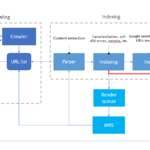🧬 How to Train for Your First Marathon: A Science-Backed Guide for Beginners
Running a marathon (42.195 km) is a profound test of aerobic endurance, muscular resilience, metabolic efficiency, and mental toughness. Training for such an event requires a structured, science-informed approach—not just logging miles blindly.
This guide offers a detailed, physiology-informed framework to help you train smarter, reduce injury risk, and cross the finish line strong.
🧠 Step 1: Assess Your Baseline – The Principle of Individualization
Training must match your starting point, a key tenet in sports science known as the principle of individualization.
Before beginning marathon prep, evaluate:
🔍 Cardiovascular Base:
- Can you run continuously for 30 minutes at a conversational pace?
- Is your resting heart rate within a healthy range (50–70 bpm for trained individuals)?
🦵 Musculoskeletal Readiness:
- Any history of repetitive strain injuries (e.g., shin splints, runner’s knee)?
- Are your hip/knee/ankle mechanics functional during walking/running?
🧬 Health Markers:
- Blood pressure, blood glucose, and iron/B12 levels (especially in menstruating females) should be within range.
If you lack a basic aerobic base, begin with 12–16 weeks of base-building (run-walk intervals, low-intensity aerobic training) before formal marathon prep.
📊 Step 2: Design a Periodized Training Plan (Based on Exercise Physiology)
Your training should follow the principle of progressive overload, guided by periodization—dividing your plan into phases that build and peak your fitness while allowing adequate recovery.
📆 16–20 Week Plan Framework:
| Period | Goal | Weekly Long Run (Approx.) |
|---|---|---|
| Base (Weeks 1–4) | Build aerobic capacity | 6–10 miles |
| Build (Weeks 5–12) | Increase mileage, add stress | 11–16 miles |
| Peak (Weeks 13–16) | Maximize endurance | 17–20 miles |
| Taper (Weeks 17–20) | Reduce fatigue, sharpen | 8–10 miles, decreasing |
Studies suggest tapering for 2–3 weeks can improve performance by 2–3% by optimizing glycogen stores, neuromuscular function, and hormone balance.
🏃 Weekly Training Components
1. The Long Slow Distance (LSD) Run
- Frequency: Once weekly
- Intensity: 60–70% of maximum heart rate (Zone 2)
- Purpose: Improves mitochondrial density, capillarization, and fat oxidation
- Tip: Use Rate of Perceived Exertion (RPE) 5–6/10 or talk test
2. Aerobic Threshold Runs (Tempo Runs)
- Intensity: 75–85% of max HR (Zone 3–4)
- Duration: 20–40 min at “comfortably hard” pace
- Purpose: Increases lactate threshold, a major determinant of endurance performance
3. VO₂ Max Intervals (Optional for advanced beginners)
- Example: 4x800m @ 90–95% effort, 2-min jog recovery
- Purpose: Improves aerobic power and oxygen utilization
4. Recovery Runs / Active Rest
- Easy-paced, low-intensity runs (Zone 1–2)
- Stimulates blood flow and muscle repair without adding stress
5. Strength Training (2x/week)
- Focus: posterior chain (glutes, hamstrings), core, calves
- Improves running economy and reduces injury risk (per studies in Journal of Strength and Conditioning Research)
🧬 Step 3: Nutrition & Energy Systems
Marathon performance depends heavily on energy system efficiency—primarily the aerobic system and its ability to utilize carbohydrates and fats.
🥗 Macronutrient Guidelines
| Macronutrient | Role | Recommendation (per kg body weight) |
|---|---|---|
| Carbohydrate | Primary fuel source | 5–7g (normal training); 7–10g (peak) |
| Protein | Muscle repair and recovery | 1.2–1.8g |
| Fat | Secondary fuel; hormone support | 0.8–1.0g |
🍌 Pre-Run Nutrition:
- Eat 1–2 hours prior: 30–60g carbohydrates, low fiber
- Examples: banana + toast, oats + honey, rice + egg whites
🏃♀️ During Long Runs (>75 min):
- Intake: 30–60g carbs/hour via gels, chews, or electrolyte drinks
- Aim for 500–700ml water per hour (adjust for sweat rate)
🍲 Post-Run:
- Consume carbs + protein in a 3:1 ratio within 30–60 mins
- Example: chocolate milk, smoothie, egg sandwich
Carb-loading 2–3 days before the marathon can increase glycogen stores by up to 50%, delaying fatigue onset.
🧠 Step 4: Train the Mind – The Psychology of Endurance
Endurance events often surpass physical limits and enter psychological territory.
🧠 Mental Tools:
- Cognitive Reappraisal: Reframe discomfort as a signal of growth, not failure.
- Visualization: Mental rehearsal of course segments and tough moments improves self-efficacy.
- Chunking: Break the race into 5K segments, aid stations, or “mental checkpoints.”
Marathoners often hit the “wall” between miles 18–22—typically when glycogen depletion and central fatigue peak. Practicing fueling and mental resilience helps manage this.
🩹 Step 5: Prevent Injuries with Recovery Science
Marathon training induces microtrauma, hormonal shifts, and CNS fatigue. Proper recovery is essential to stay injury-free.
🛠 Evidence-Based Recovery Practices:
- Sleep: 7–9 hours supports tissue repair, neurochemical balance, and performance gains
- Foam Rolling: May reduce delayed onset muscle soreness (DOMS), improve range of motion
- Periodized Rest Weeks: Every 4th week, reduce volume by 20–40% to allow supercompensation
- Biomechanics Check: Consider a gait analysis for shoe fitting and injury prevention
Overuse injuries (patellofemoral pain syndrome, plantar fasciitis, IT band syndrome) make up ~80% of running injuries—most are preventable with proper load management.
🎯 Race Day Strategy – Apply Your Training
By race day, you’ve trained your physiological systems, honed mental focus, and dialed in nutrition. Here’s how to execute:
📋 Tips:
- Pace smart: Use a pacing strategy that starts slow and builds gradually.
- Stick to what you’ve practiced: No new shoes, foods, or gear.
- Hydrate early, fuel consistently.
- Enjoy the experience: Smile, high-five kids, thank volunteers—emotion buffers fatigue.
🧬 Final Words: The Science of Self-Belief
Training for a marathon is more than a physical pursuit—it’s a transformational process. You’re teaching your body to sustain effort, your metabolism to become more efficient, and your mind to trust your training.
Whether you’re chasing a time goal or simply finishing upright, you’re engaging in one of the most time-tested feats of human endurance. With the right science-backed strategies, you will succeed.
🏁 Remember: Adaptation happens during recovery. Progress comes from patience. Performance comes from practice.









